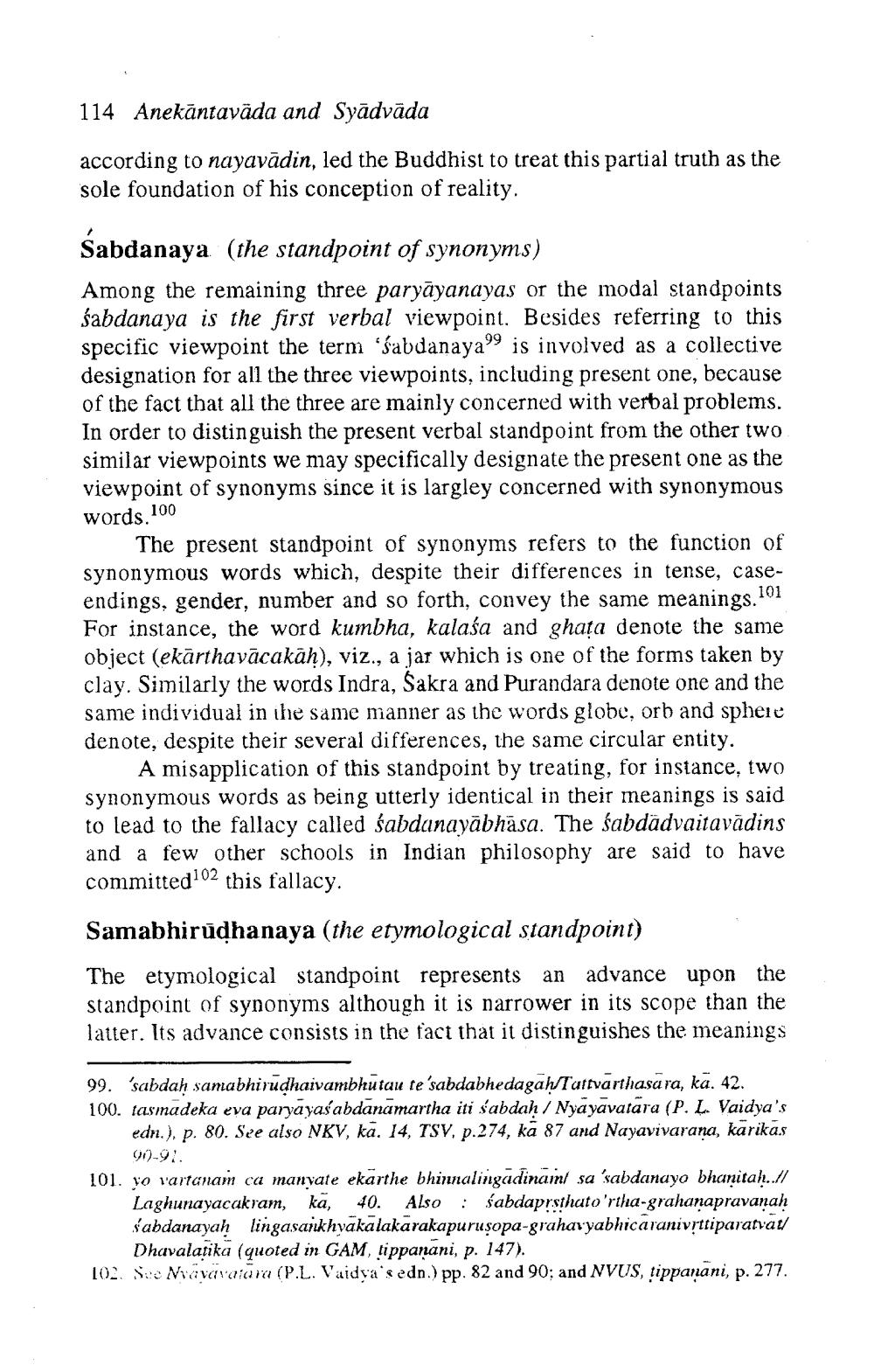________________
114 Anekāntavāda and Syādvāda
according to nayavādin, led the Buddhist to treat this partial truth as the sole foundation of his conception of reality.
Sabdanaya (the standpoint of synonyms) Among the remaining three paryāyanayas or the modal standpoints śabdanaya is the first verbal viewpoint. Besides referring to this specific viewpoint the term 'sabdanaya is involved as a collective designation for all the three viewpoints, including present one, because of the fact that all the three are mainly concerned with verbal problems. In order to distinguish the present verbal standpoint from the other two similar viewpoints we may specifically designate the present one as the viewpoint of synonyms since it is largley concerned with synonymous words. 100
The present standpoint of synonyms refers to the function of synonymous words which, despite their differences in tense, caseendings, gender, number and so forth, convey the same meanings.101 For instance, the word kumbha, kalaśa and ghata denote the same object (ekārthavācakāh), viz., a jar which is one of the forms taken by clay. Similarly the words Indra, Sakra and Purandara denote one and the same individual in the same manner as the words globe, orb and sphere denote, despite their several differences, the same circular entity.
A misapplication of this standpoint by treating, for instance, two synonymous words as being utterly identical in their meanings is said to lead to the fallacy called śabdanayābhāsa. The sabdädvaitavādins and a few other schools in Indian philosophy are said to have committed102 this fallacy.
Samabhirūdhanaya (the etymological standpoint) The etymological standpoint represents an advance upon the standpoint of synonyms although it is narrower in its scope than the latter. Its advance consists in the fact that it distinguishes the meanings
99. 'sabdah samabhirudhaivambhūtau te'sabdabhedagaḥTuttvarthasara, ka. 42. 100. tasmadeka eva paryayasabdanamartha iti sabdah /Nyayavatara (P. L. Vaidya's
edr.), p. 80. See also NKV, ka. 14, TSV, p.274, kā 87 and Nayavivarana, kārikās
90-91. 101. vo vartanam ca manyate ekarthe bhinnalingadinaml sa 'sabdanayo bhanitah..//
Laghunayacakram, kā, 40. Also śabdaprsthato'rtha-grahanapravanah s'abdanayah lingasarkhvakalakarakapurusopa-grahavyabhicaranivịttiparatvat/
Dhavalaţika (quoted in GAM, tippanani, p. 147). 102 See Navaraiara (P.L. Vaidya's edn.) pp. 82 and 90; and NVUS, tippanani, p. 277.




